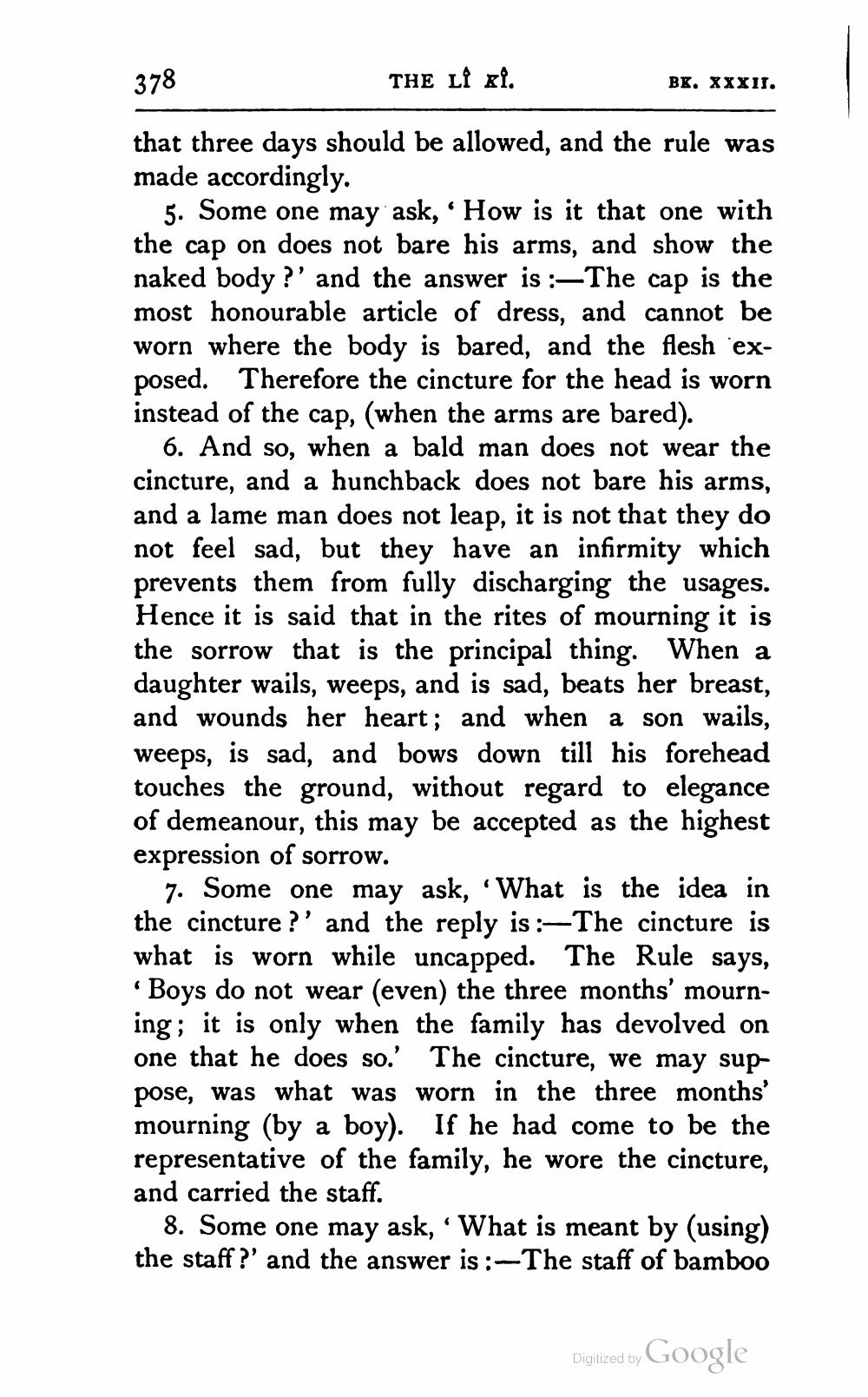________________
378
THE li xi.
BK. XXXII.
that three days should be allowed, and the rule was made accordingly.
5. Some one may ask, 'How is it that one with the cap on does not bare his arms, and show the naked body ?' and the answer is :-The cap is the most honourable article of dress, and cannot be worn where the body is bared, and the flesh 'exposed. Therefore the cincture for the head is worn instead of the cap, (when the arms are bared).
6. And so, when a bald man does not wear the cincture, and a hunchback does not bare his arms, and a lame man does not leap, it is not that they do not feel sad, but they have an infirmity which prevents them from fully discharging the usages. Hence it is said that in the rites of mourning it is the sorrow that is the principal thing. When a daughter wails, weeps, and is sad, beats her breast, and wounds her heart; and when a son wails, weeps, is sad, and bows down till his forehead touches the ground, without regard to elegance of demeanour, this may be accepted as the highest expression of sorrow.
7. Some one may ask, “What is the idea in the cincture?' and the reply is :-The cincture is what is worn while uncapped. The Rule says,
Boys do not wear (even) the three months' mourning; it is only when the family has devolved on one that he does so. The cincture, we may suppose, was what was worn in the three months' mourning (by a boy). If he had come to be the representative of the family, he wore the cincture, and carried the staff.
8. Some one may ask, "What is meant by (using) the staff?' and the answer is :- The staff of bamboo
Digitized by Google




